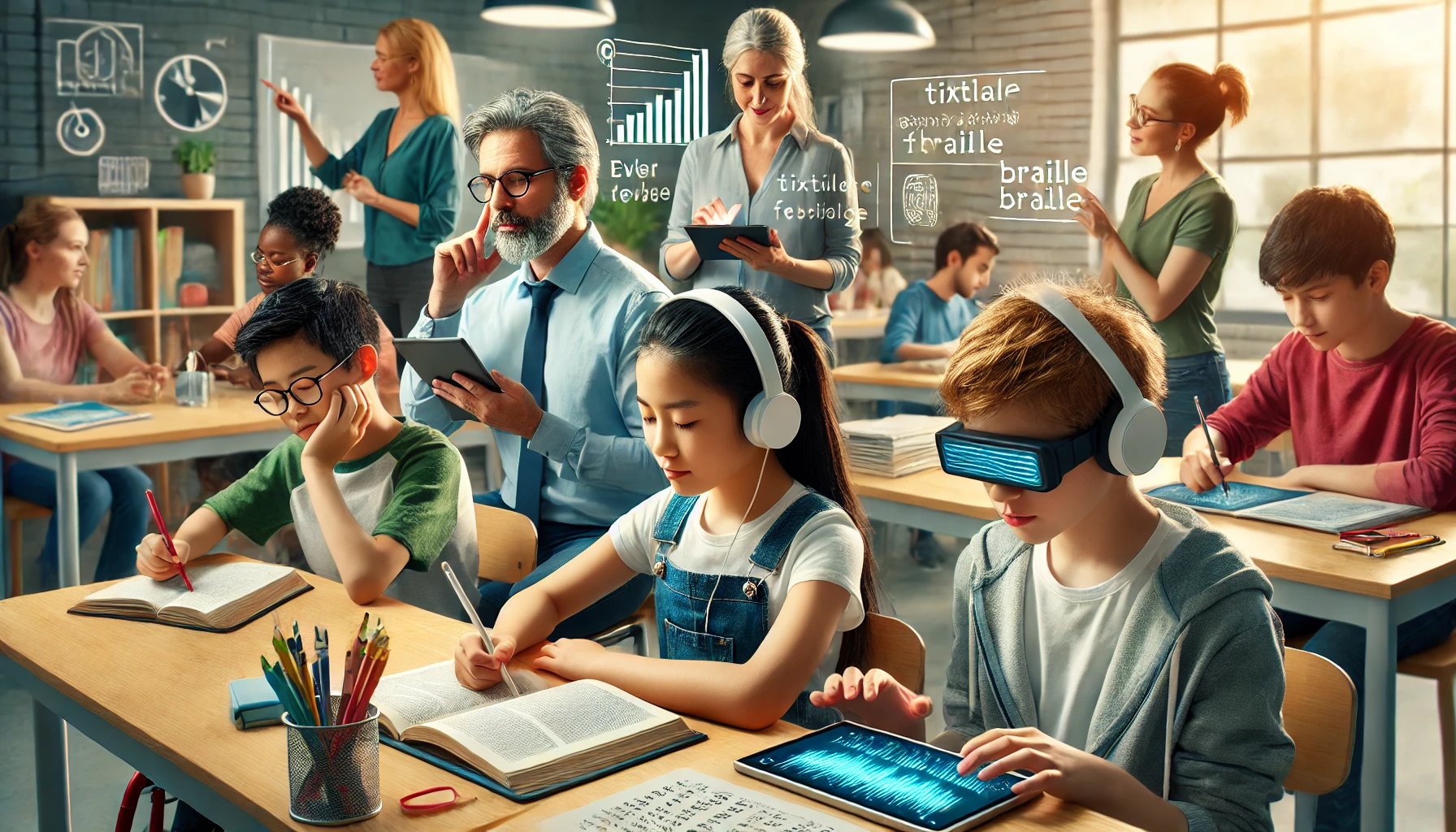Inclusivity in Education: How Assistive Technologies Are Empowering Students with Disabilities

Breaking Down Barriers with Assistive Technologies
Let’s face it – education isn’t a one-size-fits-all kind of deal, especially for students with disabilities. Thankfully, the rise of assistive technologies like speech-to-text, audio books, and tactile feedback systems is breaking down barriers that have existed for far too long. From making written content accessible to visually impaired students to helping those with mobility issues express their thoughts, technology is doing some heavy lifting in the classroom.
Speech-to-Text: A Voice for Everyone
Speech-to-text technology has been a game changer for students with physical or learning disabilities. Imagine you have dyslexia, and reading feels like deciphering an ancient script – not fun, right? Enter speech-to-text, a tool that transforms spoken words into written text in real-time. This is particularly helpful for students who may struggle with traditional methods of note-taking or writing essays. Instead of getting bogged down by spelling errors or hand cramps, they can focus on expressing their ideas. Plus, who doesn’t want a personal assistant that transcribes everything you say? It’s like having a mini stenographer in your pocket!
Audio Books: Learning with Your Ears
Remember the good ol’ days of storytime, where you could just sit back, relax, and listen to someone read aloud? Well, audio books bring that magic into the classroom for students with visual impairments or reading disabilities. Gone are the days when these students had to rely on clunky Braille books or oversized text. Now, they can access the same materials as their peers in a format that works for them – whether it’s through their smartphones, tablets, or computers. Audio books make learning feel more like an engaging podcast session rather than a chore. And let’s be honest, who wouldn’t prefer having a book narrated by Morgan Freeman?
Tactile Feedback Systems: A Hands-On Approach to Learning
For students who are blind or have severe visual impairments, tactile feedback systems are revolutionizing how they interact with educational materials. These systems provide physical sensations – like vibrations or Braille displays – that allow students to feel information rather than just hear or see it. This is especially important in subjects like math and science, where graphs, charts, and diagrams play a huge role. Imagine being able to 'feel' a graph rise and fall under your fingers. That’s some next-level stuff! These tools make abstract concepts more tangible, giving all students the chance to engage deeply with the content.
Why Inclusive Tech Matters
It’s not just about cool gadgets or flashy new apps. At the heart of assistive technology is the belief that all students deserve equal access to education. These tools are leveling the playing field, ensuring that students with disabilities aren’t left behind. Whether it's a dyslexic student finally writing a paper without stress or a visually impaired student excelling in math class, assistive technologies are turning the tide for inclusion in education.
Challenges and Future Directions
Of course, there are still challenges. Implementing these technologies requires proper training for teachers, accessibility in schools, and, let's not forget, a budget that can accommodate the often-expensive devices. However, the future looks promising as more affordable options and better training become available. Tech companies and educators alike are pushing the boundaries to ensure that assistive tools are integrated into mainstream classrooms, making them the norm rather than the exception. The dream? A future where education is universally accessible, and no student feels left out.
Final Thoughts: What’s Next for Assistive Tech in Education?
Assistive technologies are more than just tools – they’re lifelines for many students, giving them the opportunity to learn, grow, and succeed in ways that were once unimaginable. From speech-to-text to tactile feedback, the innovations we see today are just the beginning of a more inclusive educational future. So, what do you think? Could the rise of assistive technologies reshape the future of education for good?



